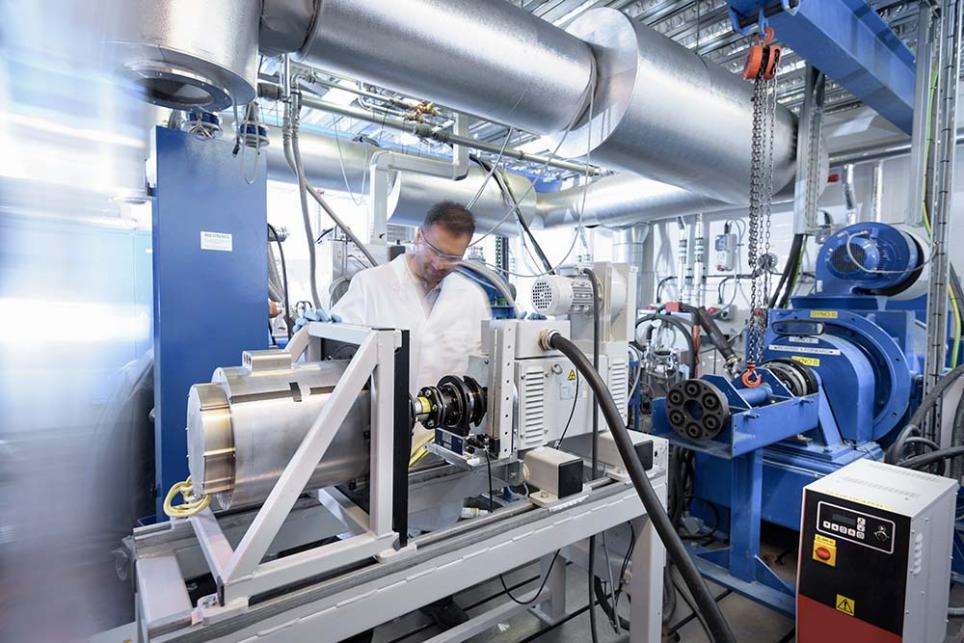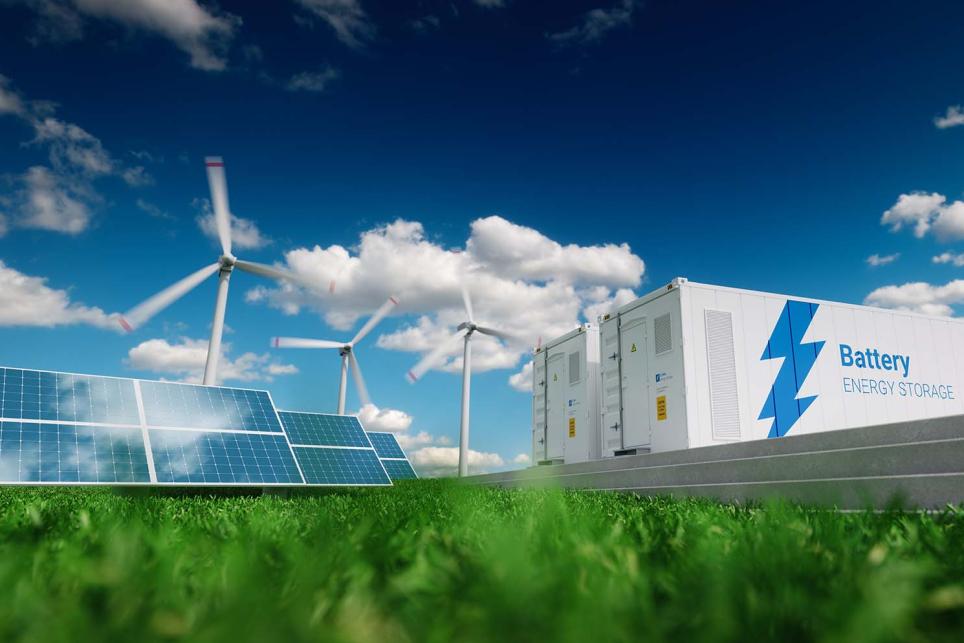Research Findings

We share our research findings and insights to advance safer design and deployment of energy storage and energy generation technologies. Read more about our recently completed projects below.
Pursuing a Safe and Efficient Way to Recycle Lithium-ion Batteries with Rice University
ESRI collaborated with Prof. Pulickel Ajayan at Rice University to investigate and develop the efficient recycling of old commercial lithium-ion cells. The goal was to recover valuable metals using an eco-friendly hydrometallurgical process. The research focused on developing effective methods for extracting transition metals in cathode materials using two types of lixiviants for hydrometallurgical leaching and refining the cathode material precipitation process. This involved optimizing various protocols, including using inorganic acid and deep eutectic solvents (DES) for greener material recovery. The project also explored safer and direct recycling strategies to reduce costs and improve energy efficiency.
Characterization of Particulates Released during Thermal Runaway of Lithium-ion Modules with Southwest Research Institute
ESRI collaborated with Southwest Research Institute (SWRI) to study the particulates emitted during lithium-ion battery failure, commonly known as thermal runaway. The project aimed to measure the concentration, size, and mass of these particulates at both the single-cell and module levels, adding depth to research literature primarily focused on characterizing the gases rather than the particulates released during thermal runaway.
Understanding particulate emissions from battery fires is crucial for evaluating the potential impact on various stakeholders, including nearby personnel, first responders (and their protective equipment), operators, and the environment. This knowledge is also instrumental in gaining insights into failure modes such as high voltage arcing and thermal runaway propagation and devising effective mitigation strategies.
The experiments revealed that the cells undergoing thermal runaway discharged a substantial amount of particulate matter. The peak particle number (PN) concentrations, reaching approximately 1E+09, were six orders of magnitude greater than the usual ambient PN concentrations. Additionally, the peak black carbon levels, reaching around 40 mg/m3 during certain tests, exceeded the safe human exposure limits.
A peer-reviewed publication titled “Characterization of Particulate Emissions from Thermal Runaway of Lithium-ion Cells” has been published by the Journal of Electrochemical Energy Conversion and Storage. Read the publication.
Redox Flow Battery Safety with Stress Engineering Services
In this project, the performance and safety aspects of two conventional redox flow battery (RFB) systems, a tabletop lab-scale size vanadium (V/V) flow battery, and a residential-scale zinc-bromine (Zn/Br2) flow battery, were studied. Current standards for the safety of flow batteries are based only on a flammability test of the electrolytes. However, the flow battery should be tested as a system to understand the worst-case results of the entire battery. The experiments were conducted to determine the worst-case effects of off-nominal conditions at the system level and characterize the gases released for their toxicity. Cycle life testing of both systems was carried out to characterize the degradation of the flow battery components under nominal conditions.
The overcharge test of a vanadium flow battery reveals excessive gas production in both the catholyte and anolyte and the graphite plates on the cathode side. However, insignificant gas production was observed in the over-discharge tests. It was also shown that the zinc-bromine flow battery released bromine gas during the overcharge tests.
A conference paper on "Safety Characterization of Flow Battery of Two Chemistries" was submitted to the 49th Power Sources Conference 2023.
Next-generation Thermal Runaway and Propagation Failure Models for Lithium-ion Batteries with Purdue University
In partnership with the Applied Thermofluids Laboratory at Purdue University, ESRI has developed a sophisticated 3D model. This model integrates heat and mass transfer, computational fluid dynamics (CFD), and combustion to replicate the ignition, combustion, and burning of the vented gases produced during a thermal runaway event in both individual cells and battery packs.
The findings from the single-cell simulation provided valuable insights into the flow patterns both before and during thermal runaway. During thermal runaway, combustion contributed significantly to the heat release rate, surpassing the heat release from decomposition reactions within the cell. The results from the pack-level simulation indicated that the combustion of vent gases results in high heat loading on neighboring cells and nearby surfaces. The simulations offered valuable insights into the magnitude of each heat transfer mechanism and the spatial distribution of heat flux on nearby cells and surfaces within the pack. The complex geometry of the safety vent geometry led to an asymmetric jet flow pattern, causing highly localized impingement heat transfer on specific cells within the enclosure. Additionally, radiation from hot surfaces had a more significant impact than radiation from hot gases and soot on neighboring cells.
A conference paper titled "Full Thermal Runaway Simulation of 18650 Nca Li-Ion Cell With Venting and Combustion in a Large Enclosure" was submitted to the American Society of Mechanical Engineers’ (ASME) International Mechanical Engineering Congress & Exposition (IMECE) 2024.
See our publications on this topic:
- Hot gas impingement and radiation on neighboring surfaces from venting and combustion in a package of 18650 cells
- A novel method for alleviating numerical stiffness in Li-ion thermal abuse models
Influence of Thermophysical Properties of Mitigation Materials on Cell-to-cell Thermal Runaway Propagation Resistance in a Shipping Container with University of Texas at Arlington
This collaborative project between ESRI and the University of Texas at Arlington aimed to develop a robust numerical simulation to study the impact of thermophysical properties of the mitigation materials on Cell-to-cell thermal runaway propagation resistance in a shipping container.
This study developed a numerical simulation for predicting temperature fields and thermal runaway characteristics in a battery pack of cylindrical lithium-ion cells. The model's accuracy was verified against experimental data from an abuse test involving 25 18650 lithium-ion cells connected in parallel (25P), separated by a phase change material within a shipping box. The study then investigated how the thermophysical properties, such as thermal conductivity, specific heat capacity, latent heat, and phase transition temperature of the interstitial material, influence thermal runaway propagation. The findings illustrated the critical role of the interstitial material's thermal conductivity in determining the likelihood of thermal runaway propagation.
A manuscript titled "Simulations-based Investigation of Thermal Runaway Onset and Propagation in Li-ion Battery Pack with Phase Change Interstitial Material" is being prepared for submission.
Modeling the Effect of Over-Discharge on Cycling of Lithium-ion Batteries with University of Texas at Austin
This collaborative modeling project between ESRI and the University of Texas at Austin aims to develop a mechanistic model for aging and degradation due to the over-discharge of cells.
A conference presentation was given by Raghav Sai Thiagarajan, Anthony Concepcion, Deepti Tewari, Judy Jeevarajan, Venkat R. Subramanian, on “A Thermal Tanks-in-Series Model for Simulating Over-Discharge Cycling in Lithium-Ion Batteries”, at the 245th Meeting of Electrochemical Society in San Francisco, California, 2024.
The manuscript is under preparation titled, “Modeling the Effect of Over-discharge Cycling on Li-ion Batteries”, Raghav Sai Thiagarajan, Anthony Concepción, Deepti Tewari, Judith A Jeevarajan, Vinay Premnath, Venkat R. Subramanian; https://osf.io/preprints/ecsarxiv/bqdk5 (For submission to ECS, currently a preprint at ECSarXiv Preprints).

